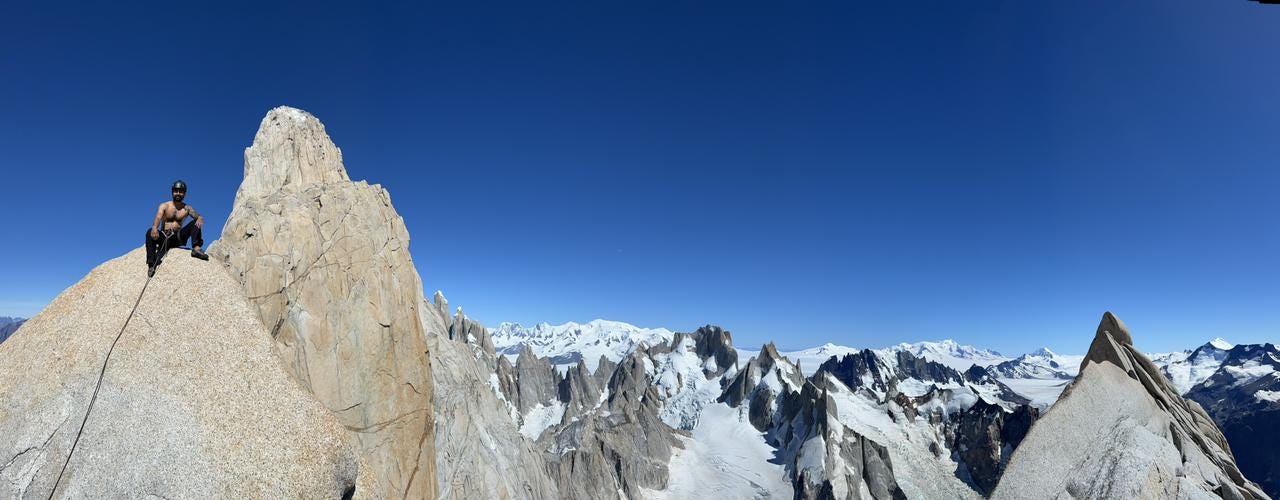
In the past year I have been going on climbing adventures that have forced me to be more mindful about the risks I am taking and making decisions accordingly. In making those decisions, I have seen some parallels between the risks I am taking while climbing and the risks I took while investing. A podcast I listen to did a deep dive into risk taking, risk management, and the decision making process. Listening to this podcast has helped me put into words the decisions and processes I have been honing while climbing.
In this post, I will be sharing my thoughts and comments on Climbing Gold Season 3: A deep dive into the art of risk taking, as well as providing my own interpretations on how many professional climbers look at risk and how those views can be applied to making all kinds of decisions, from climbing to investing to regular day to day life decisions.
What is risk?
I find Alex’ definition of risk to quite elegant despite its simplicity.
Risk = Severity of Outcome x Likelihood of Outcome
What is severity of outcome? The consequence of the negative result of the decision. In climbing, a negative result from a decision typically involves serious physical harm or death. In investing, it typically means losing money.
What is likelihood of outcome? It is the probability of the negative outcome occurring. This is the difficult part of the equation, as this probability sometimes is very hard to quantify. In some decisions, such as flying, it is quite easy to find this input. A quick google search says that the likelihood of dying in a plane crash is 1 in 11 million. Easy! So despite the severity of outcome being horrible (death), the likelihood is negligible, therefore the risk is quite low.
Other decisions, such as alpine climbing, finding the likelihood of outcome input can be quite complex. There are many factors to take into account when deciding to head up an alpine rock climb, which magnifies the complexity in trying to arrive at the likelihood of a negative outcome. I will give you an example: the sun.
Experience and deductive reasoning have taught alpinists that sun facing routes tend to be much more loose as the sun melts snow, ice, and permafrost, which could potentially rain down on you while climbing. When deciding to climb a sun facing route on the mountains, an alpinist has to consider the following when it comes to the sun risk: How much time has the route been in the sun that day and that season, what time of the day is it safer to begin the climb due to sun exposure, what were the temperatures of the season versus the historical norms (to assess how solid the frozen aspects of the mountain are), among others.
The sun is one of many aspects you need to assess. You can imagine how complex it can get depending on the alpine objective. Understanding the complexity of the decision is key towards being able to make a proper assessment of risk. It is important to understand that sometimes assessing the likelihood of a negative outcome is so complex that is better to walk away from the situation entirely (aka, not proceed with the alpine objective).
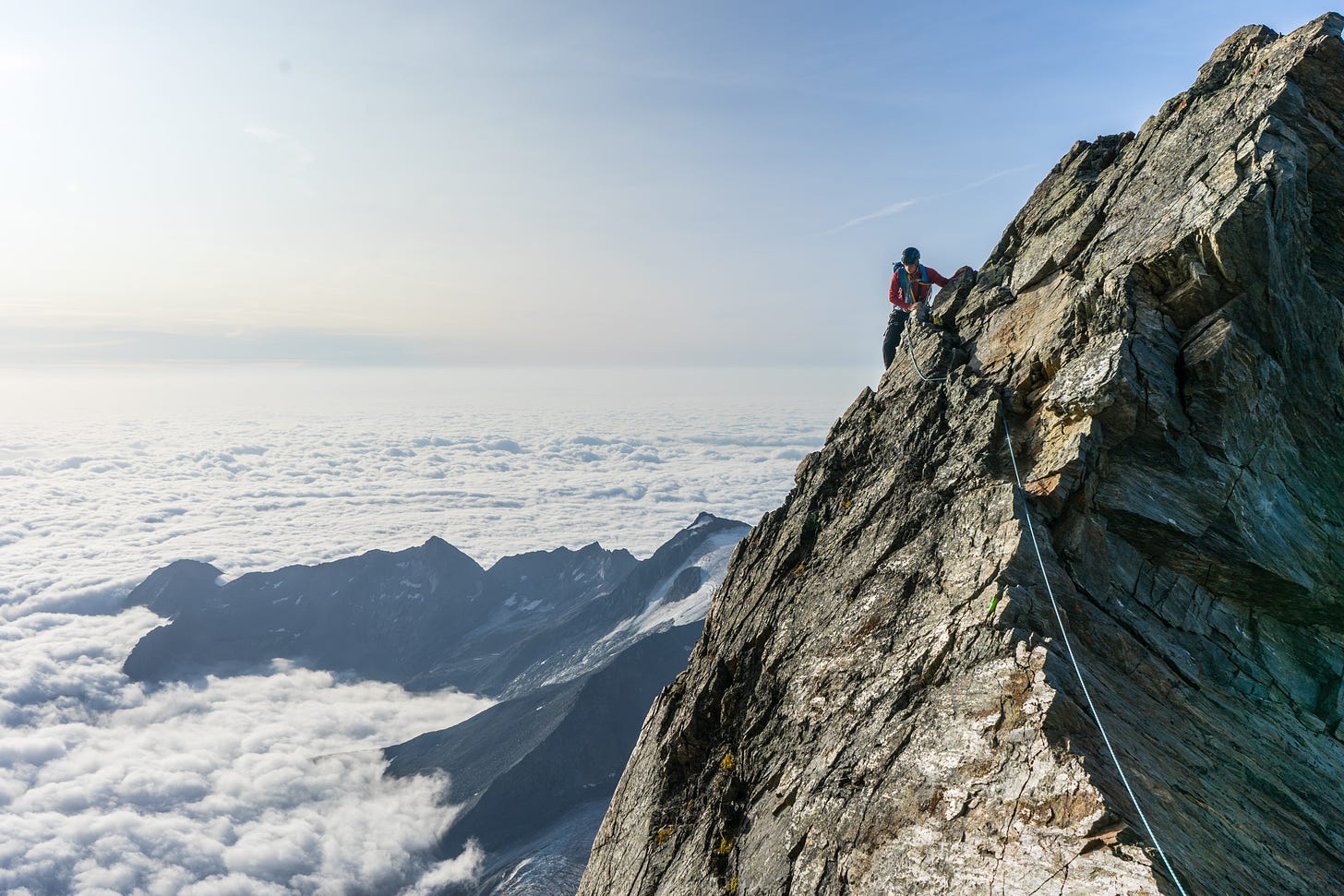
Where does our willingness to bear risk come from?
Later in the season Alex and Fitz speak with Michele Wucker, whom they jokingly refer to as the only guest who is an expert on risk. In episode 4, Michelle points out the factors that influence our risk assessment when we decide to make or avoid a decision are:
- Genetics.
- Outside Events.
- Environment.
Your genetics, your experiences living through situations you can’t control (outside events), and experiences living through situations you can control (environment) is what makes up your risk profile. Everyone’s risk profile is different, but I believe it is important to understand where your risk profile comes from. Many of the cutting edge alpinists were introduced to alpinism, mountaineering, and the risky aspects of rock climbing when they were kids. Likewise, if you grow up in a household of options traders, it is likely you grow up as someone who is willing to bear more risk when it comes to investing.
When you’re assessing the risk of an activity or decision that involves teaming up with someone, understanding your own risk profile can be very useful. It is good practice that both you and the person you’re working with understand well what is the willingness to bear risk of all parties. When roping up to do an alpine climb, if one of the parties decides that completing the objective is beyond the level of risk they thought they could take, sometimes it puts the party in a precarious situation, as bailing mid climb could be more risky than simply finishing it. In investing, it is similar: unwinding a trade halfway through could be more expensive than keeping it until intended expiry. The probability of bailing on an alpine objective or unwinding a trade can be mitigated if all parties understand their own risk profiles.
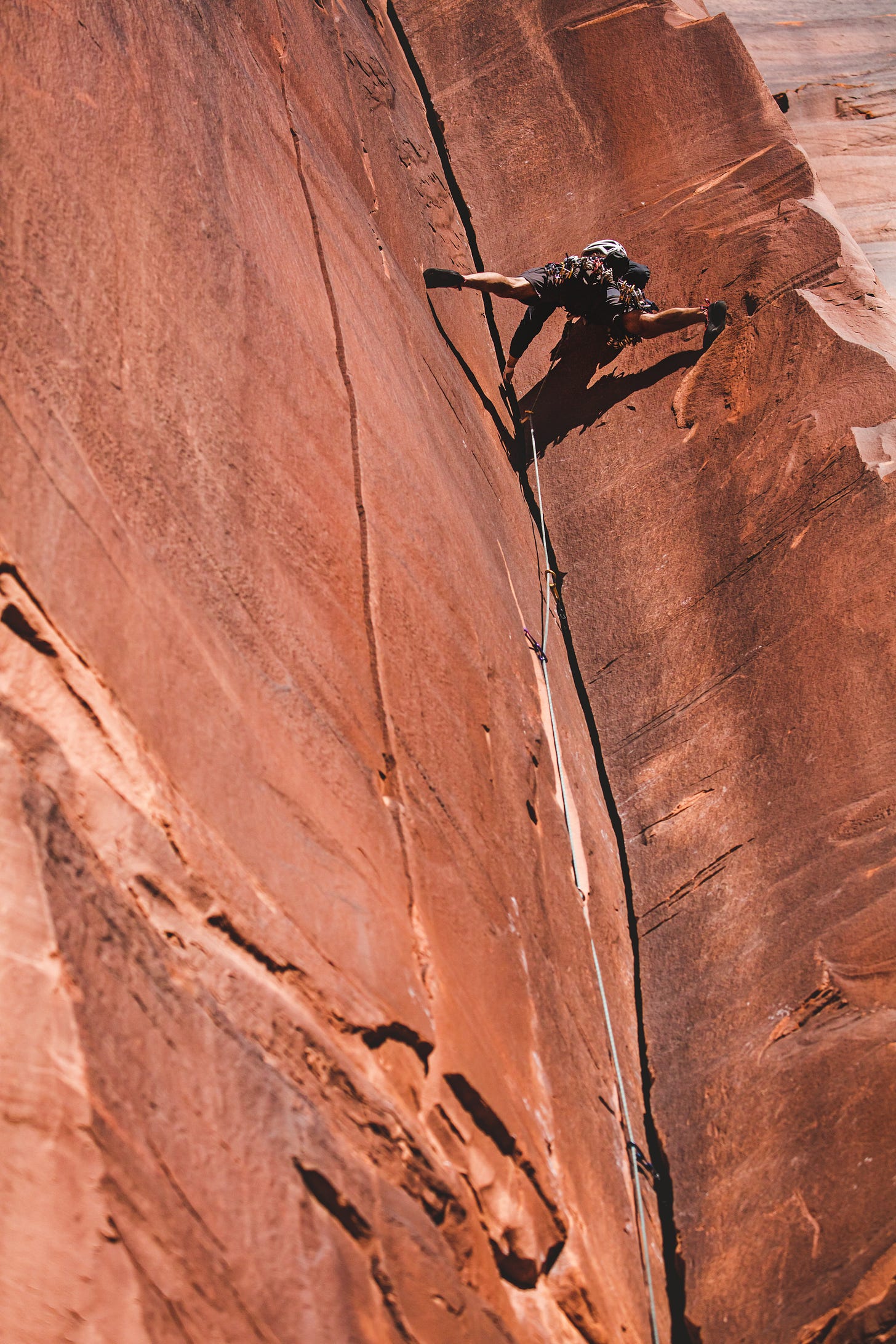
The Power of Negative Thinking
My favorite episode of the season is Episode 8: The Power of Negative Thinking, which features Brette Harrington and Will Gadd.
In the episode there are two themes: the practical use of negative thinking and eventually losing to the odds.
Like Will, I also believe that focusing exclusively on positive thinking, on manifesting good things, can be useless and dangerous. When assessing a decision, especially one with severe negative outcomes, it is important to understand what can be done to mitigate the damage of a negative outcome occurring. In climbing as well as many other outdoor activities, figuring out everything that could go wrong, and learning how to get out of a catastrophic situation can be life saving. In investing, learning loss mitigation strategies can be the difference between losing some and losing all.
One of the most practical things I learned while listening to the podcast is the risk management game Will plays with his children. Before engaging in an activity, Will asks his kids what the hazard level is. If they don’t know he teaches them, if they answer correctly, he congratulates them. Once they identify correctly the hazard level, he asks them what needs to be done to be safe. The children then verbalize what they think they need to do, and Will offers advice or corrections if need be. This way his kids are learning the different risks every activity they engage in and how to mitigate them. In the podcast, he uses examples such as hiking a backcountry trail, rock climbing, and walking the streets of New York City.
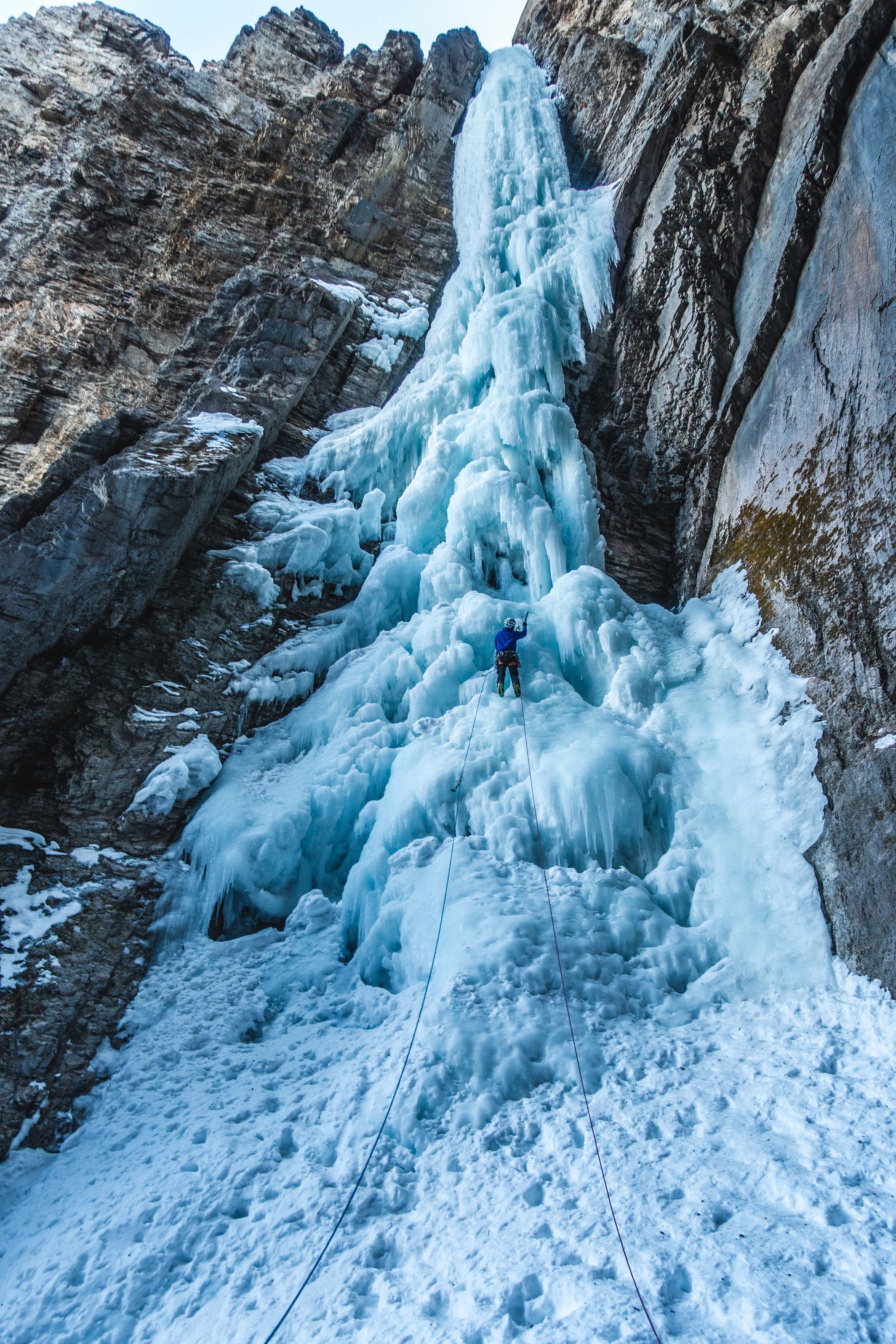
Hitting the Low Probability Odds
In several episodes, Alex and his guests discuss that even though the probability of a negative outcome of an activity can be low (say 0.5% percent), alpinists fail to see that if you do the activity enough times, eventually the probability will hit. Alex believes that the reason we only hear of a handful of deaths a year in Alpinism is because the number of people engaging in Alpinism is very small. If 100,000 people were alpinists every year, we would hear of hundreds, if not thousands of deaths in the mountains annually. Like Brette mentioned in episode 8, for experienced alpinists, luck is a big part of the game.
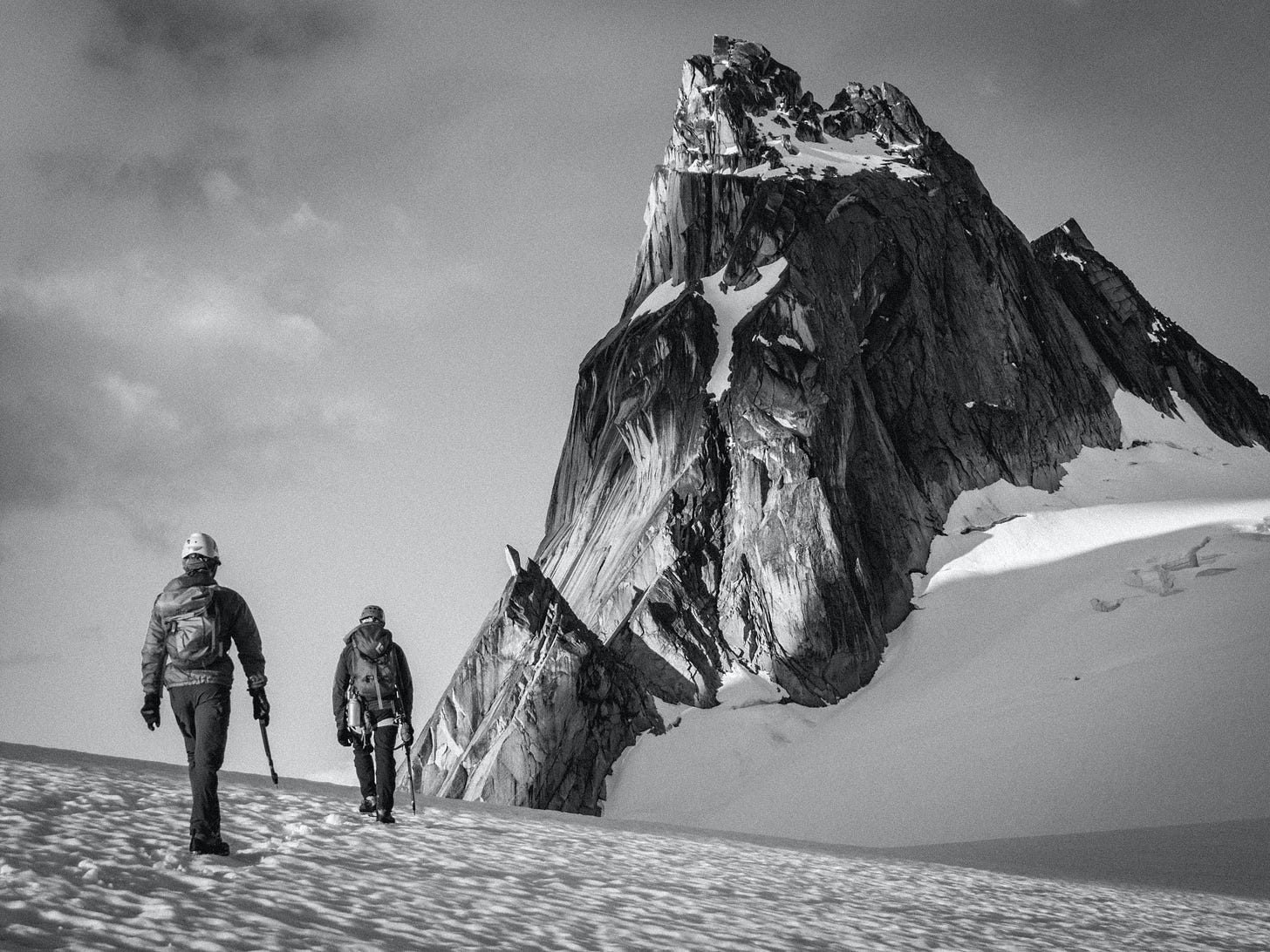
Is the Risk Worth Taking?
Ultimately, I believe this is the central theme of the entire season. Most guests justify the enormous risk of the activities they take by saying how fulfilled it makes them feel. I happen to agree. When I climbed Aguja Guillamet on February 22, 2022, I found the entire experience to be extremely rewarding and fulfilling, even though all I did was climb a very large piece of granite. To this day I still have not been able to answer why I found it so fulfilling, but what I know is that I am not the only one that finds something positive in achieving something with a high level of risk. Whether it is alpine climbing, extreme sports, high risk investing, or gambling, humans tend to enjoy the positive outcome (return) on engaging in risky activities.
In episode 9, Steve House offers a different perspective. When he was cutting edge alpinist, Steve eventually realized that the worst negative outcome of his activities was death. He came to terms that life is the ultimate loss, and that it wasn’t worth to him anymore to lose it doing the activities he loves. A few years ago, Steve walked away from it all. The advice he offers in the episode is the following:
Be honest with yourself. Understand that when you head into the mountains you might never come back.
You can never underestimate the hole you leave behind when you’re gone.
You can extrapolate that to investing. Understand that when you engage in high risk investing strategies you might lose it all. Never underestimate the hole you leave behind when you go to zero.
Takeaways
In the final episode, Alex and Fitz summarize their main takeaways from the season. Here are my takeaways:
We make roughly 35,000 decision every day and every decision carries some level of risk. Some of those decisions require you to take a step back and attempt to understand what the level of risk is, and use that understanding to make a more informed decision.
Understanding the probability of an outcome is key. However sometimes outcomes carry a level of complexity that it is almost impossible to arrive at an educated probability. If that is the case, it is probably best to mitigate the chance of the outcome occurring (For example, you can’t die climbing a mountain you decide not to climb it in the first place).
Take some time to try to understand your risk profile. This could be useful when engaging in activities with partners. Sharing your risk profile with your partner helps in understanding limits, weaknesses and challenges.
Practice negative thinking! Visualize everything that could go wrong and learn how to get out of negative outcome situations. In activities like climbing, it can be life saving.
Be honest with yourself when you’re consistently engaging in high risk activities. Understand that if you are consistently doing an activity that has a 1% chance of a severe negative outcome, after 100 times doing it, you are due to hit that 1%.
High risk activities can be extremely fulfilling. Like Alex mentions in the final episode, navigating risk is the act and art of living. Sit back and ask yourself if losing your life (Or net worth investing) is worth it. Don’t underestimate the hole you leave behind if you depart this earth.